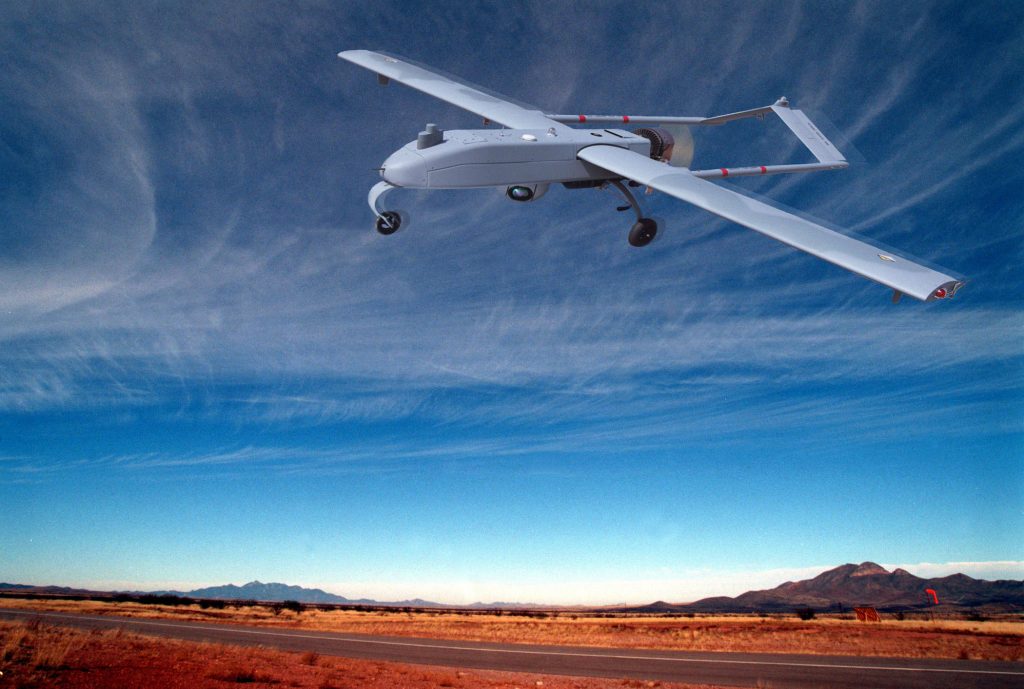
Download 300dpi JPEG image, ‘minisar-shadow-200.jpg’, 544K (Media are welcome to download/publish this image with related news stories.)
ALBUQUERQUE, N.M. — Within a year the National Nuclear Security Administration’s Sandia National Laboratories will be flying the smallest synthetic aperture radar (SAR) ever to be used for reconnaissance on near-model-airplane-sized unmanned aerial vehicles (UAVs) and eventually on precision-guided weapons and space applications.
Weighing less than 30 pounds, the miniSAR will be one-fourth the weight and one-tenth the volume of its predecessors currently flying on larger UAVs such as the General Atomics’ Predator. It is the latest design produced by Sandia based on more than 20 years of related research and development.
The new miniSAR will have the same capabilities as its larger cousins. Like the larger class of Sandia SARs, it will be able to take high-resolution (four-inch) images through weather, at night, and in dust storms. The only difference will be range. The larger SAR can produce an image in the 35 kilometer range due to its larger antenna and higher transmitter power, compared to the miniSAR, which is expected to get a range of about 15 kilometers — more than adequate for small UAV applications. SARs are commonly used for military reconnaissance purposes.
MiniSAR is a revolutionary step forward in this long tradition that will open up a whole new class of applications, says George Sloan, Sandia project lead for miniSAR development.
Sloan and fellow Sandia researchers Dale Dubbert and Armin Doerry created the current approach for miniaturized SARs years ago. The effort incorporated a number of key technologies, including mechanical design, digital miniaturization, RF miniaturization, and navigation expertise.
Last November, after the gimbal and electronics teams got the miniSAR down to its diminutive 30 pounds, they introduced it at a UAV conference. Since then, more than 30 potential customers, including intelligence agencies, UAV manufacturers, and major radar vendors, have visited Sandia to discuss possible licensing and use of the miniSAR.
The new miniSAR consists of two major subsystems: the Antenna Gimbal Assembly (AGA) — the pointing system that consists of the antenna, gimbal, and transmitter — and the Radar Electronics Assembly (REA) — the signal generator, receiver, and processors. The AGA beams the radio frequency, and receives it back. The REA is the electronics package that generates the radar signals, controls the system, processes the data, and transforms it into an image.
Through the creation of new ultra-lightweight antennas and miniaturization of the gimbal, the miniSAR team was able to reduce the AGA portion from 60 pounds, as in current UAV systems, to 18 pounds. Through novel adaptation of state-of-the-art digital and RF technologies, the REA was reduced from about 60 pounds to 8.
Future versions of miniSAR are planned that will shrink the total weight to less than 10 pounds by leveraging both in-development and yet-to-be developed Sandia microsystems technologies.
The miniSAR will have two primary applications. It will be used for reconnaissance on small UAVs, such as the AAI Corp. Shadow. This class of small UAVs can carry a payload of 50 pounds, which is considerably less than existing radars can carry. Thus, current small UAVs are limited to carrying video or infrared cameras. A 30-pound miniSAR will allow the small UAVs to carry additional sensors that together will provide a very detailed reconnaissance picture.
The second application is for precision-guided weapons. Current guidance systems for these weapons rely on target designation methods that are subject to jamming and have trouble operating in bad weather and dust storms. MinSAR is resistant to these problems. Previously SAR versions were too big, too heavy, and too expensive to use in precision-guidance applications.
“We look forward to making the miniSAR small, light, and affordable,” Sloan says.
He says the researchers are now very close to having a miniSAR compatible with the small UAV requirements for cost, size, and weight. They are “a little farther away” for precision-guided weapons, but are on the path to making it possible.
Sloan says the miniSAR is near to being flight-tested. The principal remaining tasks include the integration of the radar subsystems and the completion of the system software. Then the first version of miniSAR will be ready to go.
Sloan anticipates that in about a year the miniSAR will be flight-tested on a Sandia test-bed aircraft. Then UAV vendors will demonstrate it on their own UAVs. The transfer of the technology to industry will follow.
But even as all this happens, the Sandia researchers will continue to make improvements and help miniSAR evolve into something even better and smaller. “We fully expect miniSAR to be the next big splash,” Sloan says.